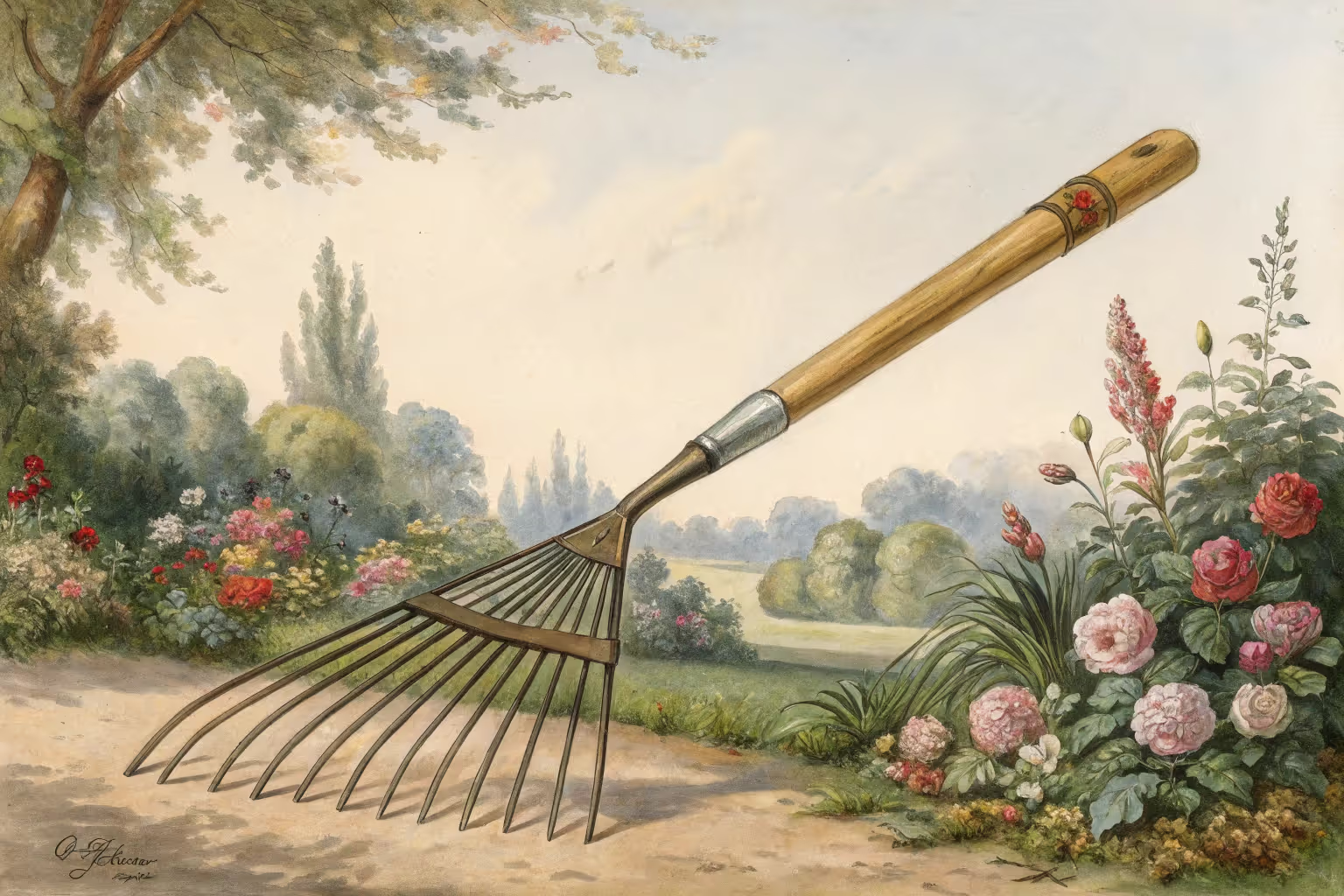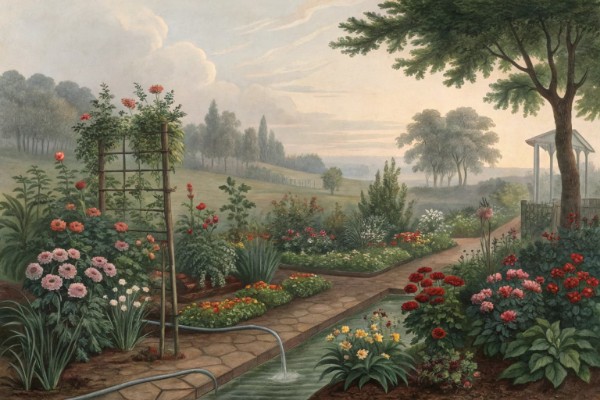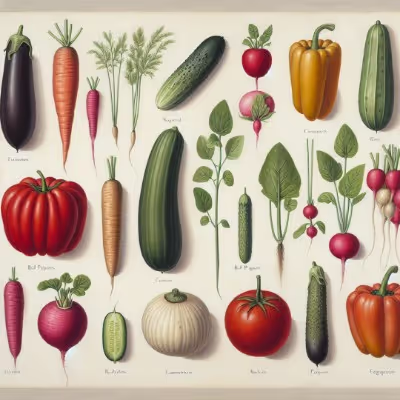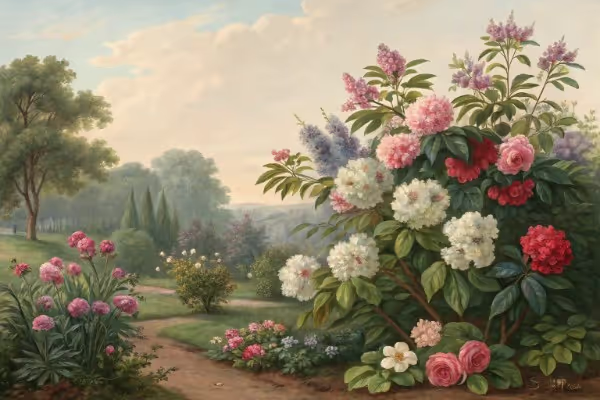Garden Rake Essentials for a Healthy Lawn and Landscape

Garden rake
Selecting the right garden rake determines whether your soil invigorates or suffocates your plants. A sturdy garden rake swiftly breaks up compact earth, removes destructive debris, and lets your garden beds breathe. The correct garden rake even primes your yard for healthy root growth and thriving greenery—but choose poorly, and prepare for frustration. Let's find the ideal rake to fit your gardening style.
Cheatsheet: Rake Your Way to Vigor & Order
🛠️ Tools and Products You'll Need
- Leaf rake (flexible tines for leaves, debris)
- Lawn/soil rake (rigid tines for dethatching, leveling soil)
- Gloves (to protect hands)
- Compost bin (for collected organic debris)
🌱 Best Times for Raking
- Spring: Clear winter debris, prep for growth
- Autumn: Remove leaves, prevent fungal diseases
- After mowing: Remove excess clippings, stop thatch buildup
✅ Step-by-Step Healthy Raking
- Prep: Wait until lawn is dry to prevent compaction and root damage
- Leaf Raking: Use flexible rake for fallen leaves, sweep in one direction to reduce grass stress
- Dethatching: With stiff rake, pull up thick mats of dead grass (thatch thicker than 0.5 in/1.3 cm)
- Smoothing: Use soil rake to even bare spots and spread compost/topsoil
- Final Touch: Add debris to compost bin or mulch garden beds
🌿 Nutrition & Self-Sufficiency Benefits
- Raked clippings enrich compost and garden beds
- Removes pest & mold hosts, boosts food crop health
- Encourages deeper root growth and soil oxygenation
📊 Rake Facts
- 60M tons of leaves fall annually in the US—leaving them smothers lawns
- Lawns raked 2-4x/season grow 25% thicker grass
- Manual raking burns 250-300 cal/hour
The Humble Garden Rake: Your Unsung Gardening Companion
I once dismissed a garden rake as a mere backyard prop—until one autumn afternoon set me straight. Leaves piled knee-high after a vigorous October storm, and my casual attitude evaporated fast.
A quality garden rake transformed that tedious leaf-clearing routine into a satisfying afternoon workout. Afterward, I tidied the beds, smoothed the soil, and soon realized how I'll never underestimate its utility again.
Rakes Come in Many Flavors—Choose Wisely
Garden rakes aren't one-size-fits-all, folks. Each type fits a specific gardening need.
- Leaf Rake: Wide, fan-shaped, flexible tines ideal for leaves, pine cones, or stray grass clippings. Great for gentle clearing without damaging the turf underneath.
- Bow Rake: Sturdy, short metal tines, suitable for leveling, grading, or moving heavier soil. This rake is your best friend when preparing beds or breaking up dense soil clumps.
- Thatch Rake: Featuring sharp blades rather than tines—this specialized tool removes dead grass and debris from your lawn, promoting healthier turf growth.
The Right Tool Makes Garden Prep Effortless
Last spring, frustration arrived swiftly when preparing my new raised beds without the proper rake. After wrestling stubborn clay clods barehanded, dirt-stained knuckles were my only trophies.
A decent bow rake turned the tide. With minimal effort, I crumbled soil lumps, leveled compost evenly, and secured the ideal terrain for eager seeds waiting patiently in my pocket.
Mulch Placement: A Rake's True Calling
You've lugged in bags of fragrant cedar mulch, only to find your garden resembles an uneven cinnamon bun disaster—sound familiar?
The garden rake smooths mulch effortlessly, evenly coating your flower beds and assisting moisture retention while suppressing pesky weeds. Loose mulch layers also boost beneficial microbes and insect life beneath your plants.
"Proper mulching can reduce weed growth by up to 50% and prevent soil moisture loss by 25%." – University Extension Agricultural Report
Choosing Your Garden Companion Carefully
The key lies in material and comfort design. Wooden-handled rakes offer warmth and a pleasant grip, though fiberglass and aluminum present lighter alternatives requiring less effort.
Pick comfortably curved handles that ease strain in your joints during prolonged gardening sessions. A thoughtfully chosen rake becomes an extension of your gardening spirit rather than another forgotten garage ornament.
Caring for Your Rake Assures Longevity
A decent rake deserves proper maintenance. Every spring, I clean rust spots from metal tines with steel wool or sandpaper, then finish with a light coat of oil for rust prevention.
Wooden handles benefit immensely from occasional linseed oil applications to resist wear and cracking. Show your rake some respect—it's earned it.
My Final Word on Rakes
Over seasons filled with grass-stained boots, hot coffees in damp April air, and leaf mountains defeated in crisp October breezes, I've learned to value a quality garden rake deeply.
Expression, after all, is not limited to canvas or clay; gardening tools speak volumes, quietly sharing your garden's story. Choose yours wisely, maintain it lovingly, and your rake will repay you tenfold year after year.

Want smarter plant choices? 🪴
Frequently Asked Questions About Choosing and Using a Garden Rake
How do I select the ideal garden rake for my soil type?
Match your rake to the soul of your soil—heavy clay soils respond best to sturdy steel-tined rakes, capable of breaking down clods with tenacious efficiency. Conversely, for soft, sandy soils, opt for a lighter rake with broader tines to gently shape and smooth without leaving deep grooves.
Does the rake's tine material truly affect gardening results?
Absolutely. Steel tines pierce deeply and break apart stubborn soil, ideal for heavy-duty work, while bamboo and plastic tines deftly gather leaves and debris without tearing delicate grass or flower beds. Select wisely—each material whispers a different gardening philosophy.
Why should I own different types of garden rakes?
Imagine cooking a perfect meal with just one pan—possible, yet creatively limiting. Owning a few well-chosen rakes (leaf rake, soil rake, and thatch rake) grants precise control over soil preparation, clearing debris, and cultivating healthy lawns.
What's the advantage of an ergonomic rake design?
An elegant ergonomic rake curbs unnecessary strain, enabling longer gardening sessions with reduced fatigue. Its thoughtfully shaped handle and balanced weighting make the rake feel like an extension of your limbs rather than a tool you wield begrudgingly.
How can regular rake maintenance extend its lifespan?
Care for your rake as you would any trusted implement—clean dirt and leaves from the tines after use, rub down steel parts occasionally with linseed oil, and store in dry shelter. Such modest rituals prolong a rake's lifespan, enhancing both its efficiency and your gardening pleasure.
At the end of the day, a garden rake is the quiet workhorse that keeps your grass honest, your beds tidy, and your soil ready for anything. The right rake clears debris, breaks up thatch, and preps the ground for planting—no fancy tricks, just pure utility. Take care of your tools and they'll take care of your yard. If you’re looking to up your game, a well-chosen garden rake pairs perfectly with basics like a gardening stool or a gardening apron—no need to overcomplicate things. A sharp eye, the right tool, and steady hands: that’s what brings a lawn to life. Treat your garden rake like an old friend, and it’ll reward you with a yard you can be proud of.
The Prepper's Guide to Garden Rake Mastery
Garden Rake as Survival Tool
- Emergency Food Cultivation: Rapidly prepares soil beds; supports high-yield vegetables like potatoes, carrots, and beets essential for emergency sustenance.
- Water Management Efficiency: Quickly forms shallow trenches for controlled water distribution, optimizing water use during droughts or limited supply scenarios.
Essential Rake Techniques for Crisis Preparedness
- Surface Mulch Gathering: Rapidly rakes leaves and debris to form insulating mulch layers, regulating soil temperatures, retaining moisture, and suppressing weeds, improving crop yields by up to 30%.
- Immediate Firebreak Formation: Swiftly clears vegetation to create protective firebreaks, decreasing wildfire risk near home and garden areas.
- Rapid Soil Aeration: Breaks and loosens compacted earth to instantly promote air and water penetration, preserving soil fertility for sustained crop production.
Rake Maintenance Tips for Long-Term Reliability
- Rust Prevention: Apply natural linseed oil monthly to metal rake heads; store in dry, ventilated locations to ensure long-term use.
- Quick Handle Repair: Stock duct tape or durable cordage for on-the-spot repairs, allowing continued rake function during tool shortages.
Health and Nutrition from Rake-Ready Crops
- Nutrient-Dense Harvests: Produce high-calorie root vegetables with essential vitamins (A, C, K), minerals (potassium, magnesium), and fibers that boost immune function and sustain energy during emergencies.
- Medicinal Plant Beds: Efficiently cultivates herbal remedies (echinacea, calendula, garlic) assisting immunity, wound care, and overall wellness in crisis environments.
Find out which plants will thrive in your garden!
Answer a few fun questions and get custom plant recommendations perfect for your space. Let’s grow something amazing together!

start your season





